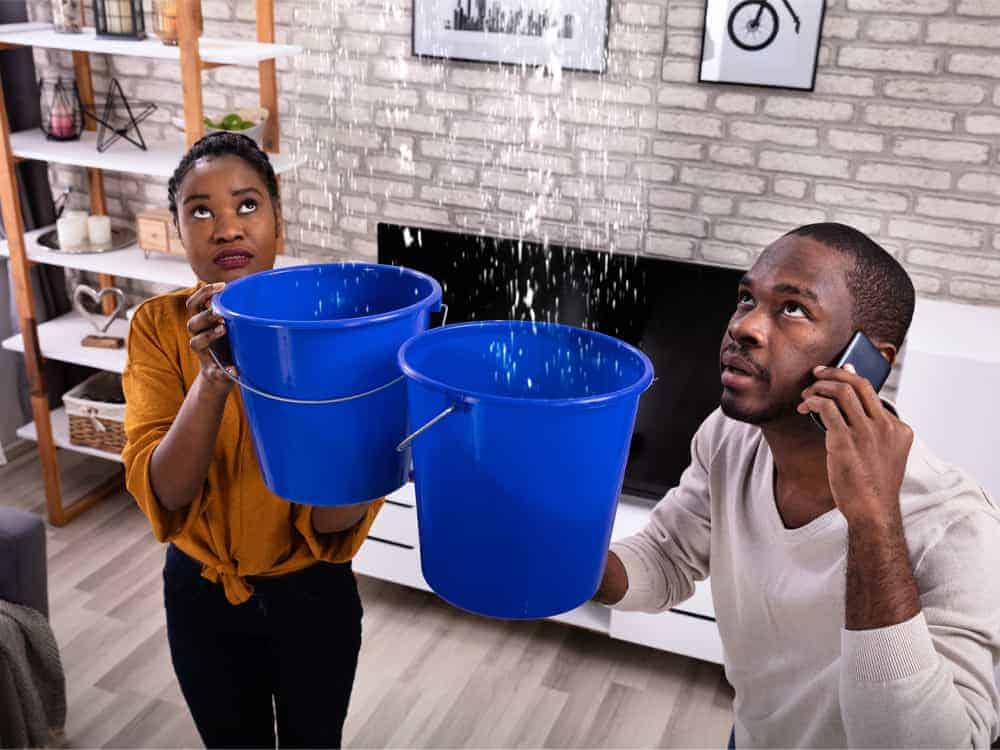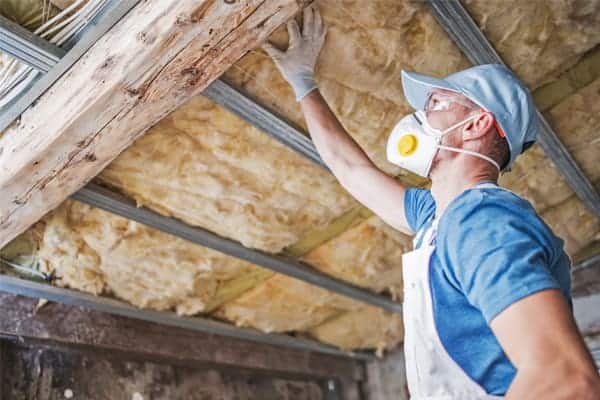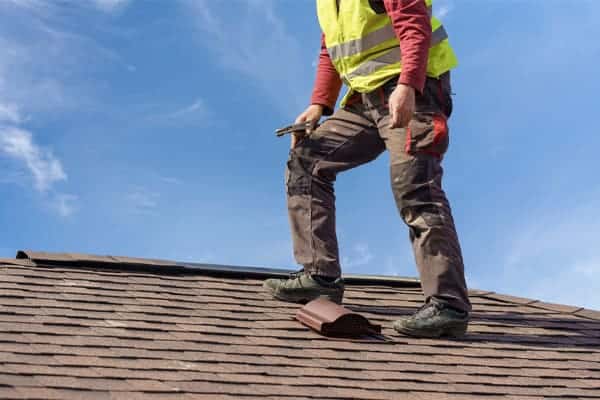How Bad is My Roof Leak?

Did the latest downpour send you and your family scrambling for buckets? Or did you look up one day and suddenly notice a water stain on the ceiling that you are sure hasn’t been there long? These types of events can often send us into a panic as our mind conjures up images of major roofing repairs.
While fixing roof leaks can be a big ordeal, the truth is that many roof leaks aren’t that serious. In fact, there are several issues you can handle on your own. Here we’ll discuss a few of the more common problems and what you can do to fix them yourself.
The Damaging Effect of Roof Leaks
What may appear to be a minor issue could quickly turn into something more serious if not addressed immediately. No matter how small the problem, take steps to track down the source and fix it as soon as possible.
Possible Animal and Pest Intrusion
Any amount of water damage to your roof can be a potential entry point for pests or animals. If that happens, you could be faced with a repair bill and an extermination bill.
Risk of Electrical Fire
Your ceiling is the first place you’ll notice if you have a bad leak. Any electrical wires in the path of a leak could create a spark when you turn on any fixture connected to the wire.
Causes Structural Damage
A roof leak isn’t always so apparent. Or, the issue may seem minor. However, a small leak allows water to seep down the wall behind the drywall. Excess moisture in the framing can warp, which puts the structure of the home at risk.
Causes Structural Damage
A roof leak isn’t always so apparent. Or, the issue may seem minor. However, a small leak allows water to seep down the wall behind the drywall. Excess moisture in the framing can warp, which puts the structure of the home at risk.
Leads To Mold
According to the CDC, water trapped in the walls or the ceiling is the perfect breeding ground for mold. Mold spreads rapidly. So even though you may not see the damage, it is certainly there and growing.
Damages Personal Belongings
In more serious cases, a significant roof leak can damage personal belongings such as furniture, electronics, bedding and more.
Risk of Personal Injury
A wet ceiling could spell disaster for anyone in its path. Too much water in the ceiling could cause it to collapse.
Locating Roof Leaks
In the absence of glaring evidence, you may need to do a bit of detective work. These few tips are easy to follow and should help you track down any problem quickly. For the first few of these tips, you will be inspecting the underside of the roof. For this, you’ll need a flashlight and access to your attic.
Water Spots
Water stains are a clear sign of damage. Don’t end your search too quickly, though. Be sure to check the entire roof to make sure you don’t miss any additional water spots.
Insulation
If you have insulation on the underside of your roof, you can use that to aid in your search. Simply find the wet spot in the insulation and follow it to the source.

Foreign Objects
Be on the lookout for signs of piercing from foreign objects, especially after a major storm. Fallen branches, rocks or other types of foreign objects can also lead to piercing.
Vent Seals
Roof vents are usually sealed pretty tightly. However, over time, the seal could start to erode. Check the seal on all vents to make sure it is still intact.
Advanced Technique: Use a Water Hose
You’ll need an extra set of hands and eyes for this tip. If you absolutely can’t find the problem with any of the above suggestions, you can simulate rainfall on your own. Grab a water hose and spray water on the roof. Have your helper inspect the roof from the attic and take note of where water is leaking.
Assessing the Damage & Preparing for The Fix
Determine the severity of the damage. Ask yourself if the issue is something you feel comfortable tackling yourself. If not, call a professional to assist.
Determine what steps you need to take to make a successful repair. Gather the appropriate supplies and equipment. Protect the area where you will be working by placing a tarp in the attic to catch any excess water or falling debris. If you need to access the roof, be sure to have an assistant to help you safely navigate up and down the ladder.
Fixing a Leaky Roof
As we mentioned earlier, there are some roof problems you can address yourself. However, if at any point you feel uncomfortable, you should definitely call a professional.
Fixing Shingles
One of the more common problems with shingles is curling or cupping. You can fix this problem by applying a thick layer of asphalt cement to the underside of the shingle and pressing the shingle firmly into place.
Damaged or broken shingles require a bit more work. Remove any damaged shingles by prying it away with a crowbar. Use a utility knife to shave the sides of the shingle to fit into the opening. Secure the new shingle with roofing nails on all for corners. Lastly, cover the nails with roofing cement.
Repairing Flashing
Sometimes it is necessary to repair the flashing around dormers and chimneys on your roof. Use a caulk gun filled with roofing cement and reseal all the edges.

Tips to Help Prevent Roof Leaks
Being proactive is the first step in protecting your roof from damage.
Regular Inspections
Inspect your roof annually at a minimum. Spring is the ideal time to give your roof a thorough inspection after a harsh winter. Ideally, you should inspect more often if you live in an area prone to high winds or heavy rain.
Roof Upgrade
If heavy rain and wind are common in your area, you may want to consider upgrading your roof to something more impact resistant or something that can withstand high winds.
Trim Landscaping
Mature landscaping may be great for your property value. But it can be a nightmare for your roof. Falling branches and tree limbs can cause major damage. You don’t have to cut your landscape barren. Trimming the larger branches away from the roof should suffice.
Repair Damage Right Away
Even a small repair can become a big problem. Take care of any problem as soon as possible.
Keep the Gutters Clean
Keeping your gutters free of debris prevents water from backing up into your home, which could lead to ice dams on the roof. Ice dams are a buildup of ice that places extra weight and stress on the roof.
Ensure Proper Ventilation
Ventilation is key to preventing heat buildup in the attic. Too much heat puts pressure on the underside of the roof. When this happens, the shingles become weakened and are prone to warping, cracking and coming loose.
When to Call the Pros
Although you can handle many roof issues on your own, there may come a point when you need to call on a professional. Here are a few common reasons to pick up the phone and call a roofing expert:
- The problem is inaccessible
- You don’t feel comfortable performing the repair yourself
- You can’t find the source of the leak
In general, you should call a professional when in doubt about any issue with your roof. It is better to let an expert handle the situation rather than to make things worse by attempting the repair on your own.
Where to Hire the Best Roofer in my Area
When you need a roofer, there’s no place better to look than in your own neighborhood. At Rennison Roofing, we know the Columbia, South Carolina, area better than anybody else and have helped countless families and businesses get back to their lives quickly and painlessly under a brand new roof.
We have trained specialists equipped to repair roof structures, replace roofs entirely, and install new roofing whenever needed, even metal roofing!
Getting a roof over your head is one of the most important things you can do for yourself and your family. Call or email us today to get started.
